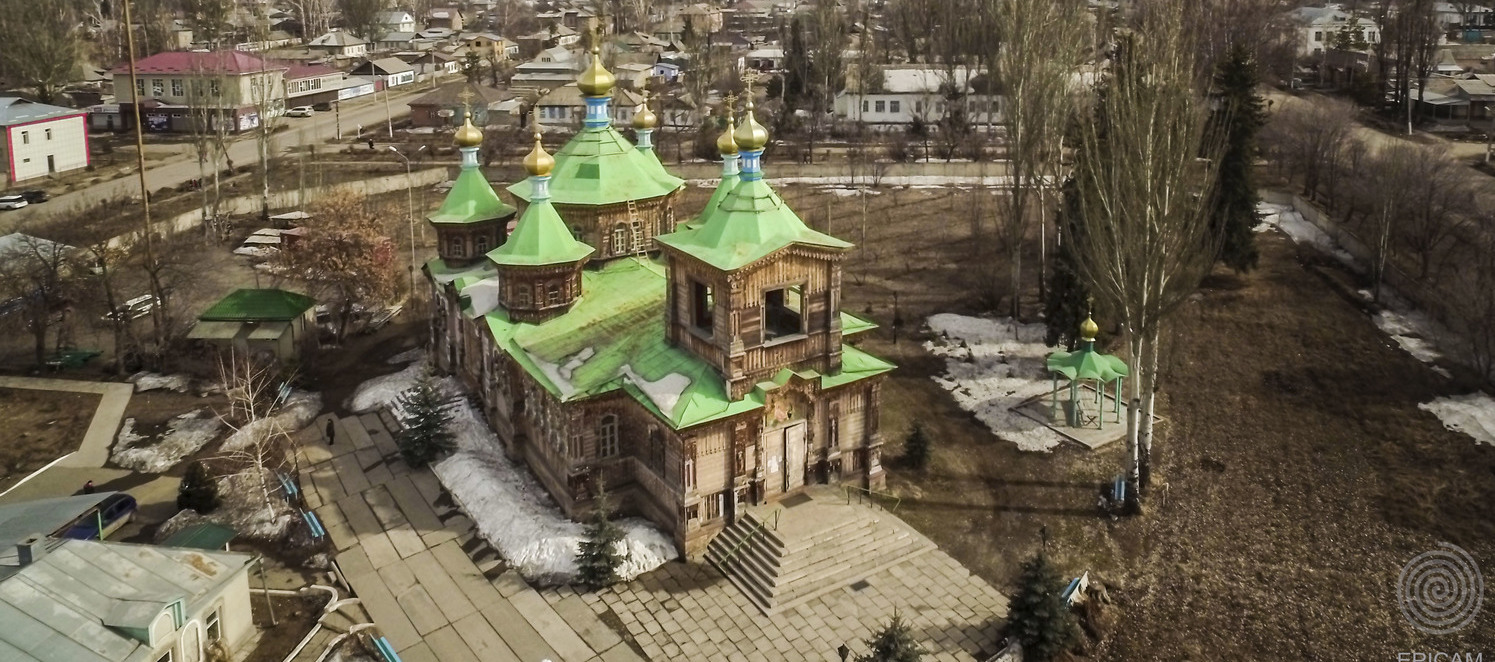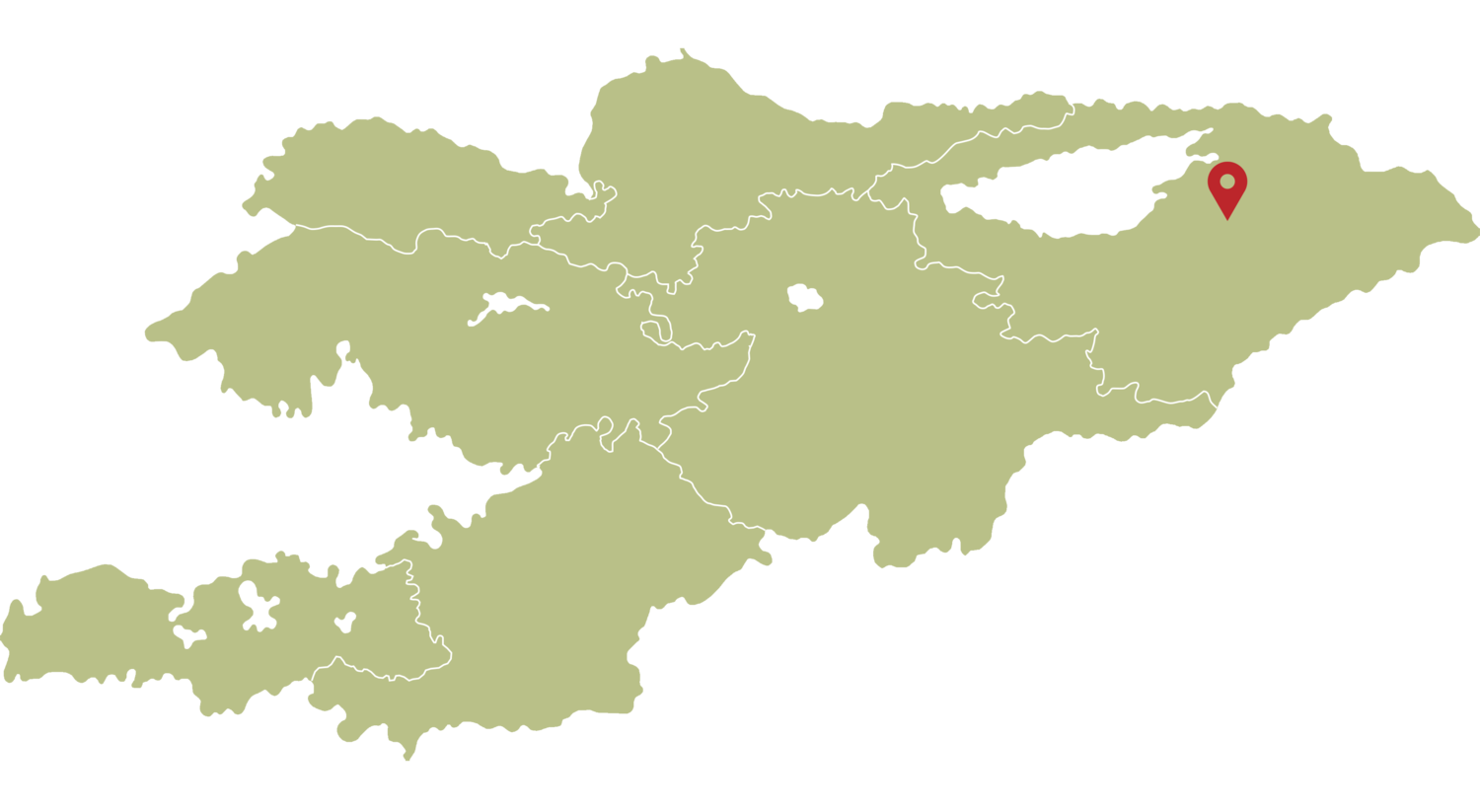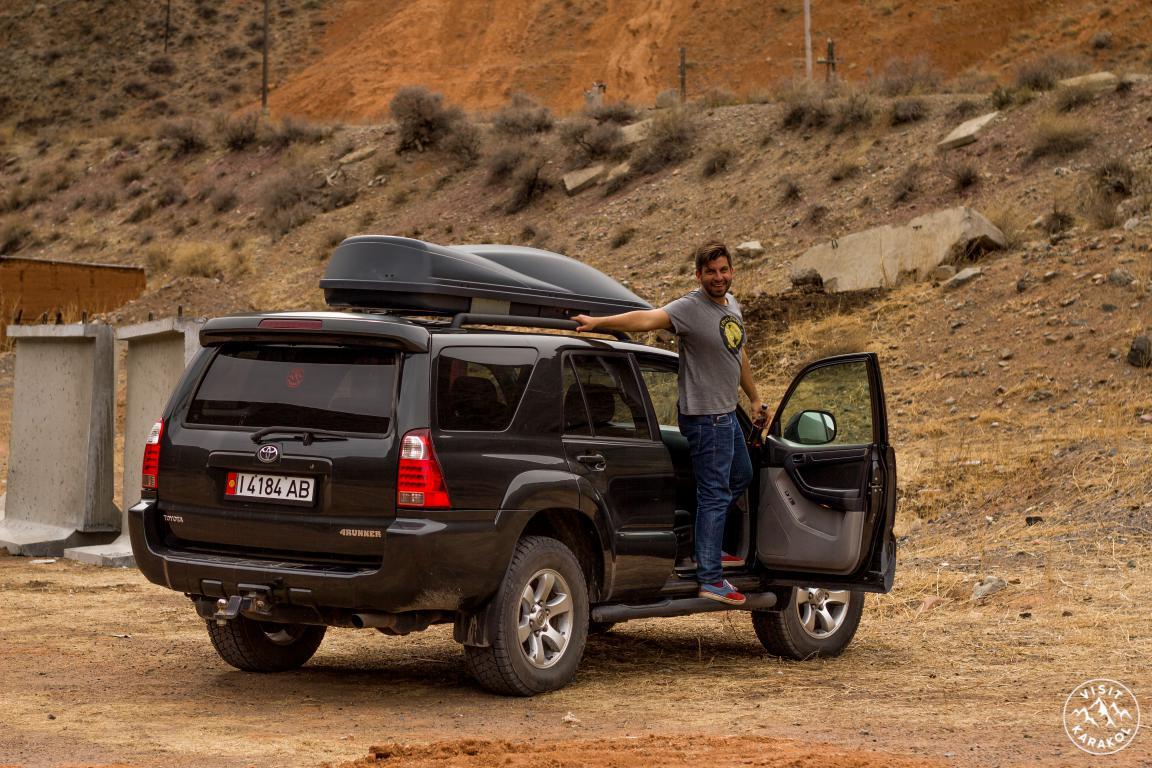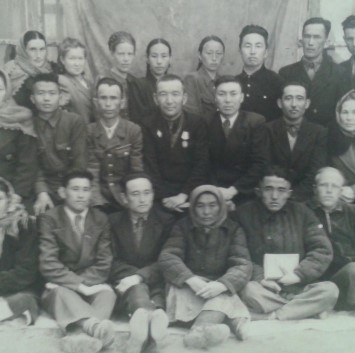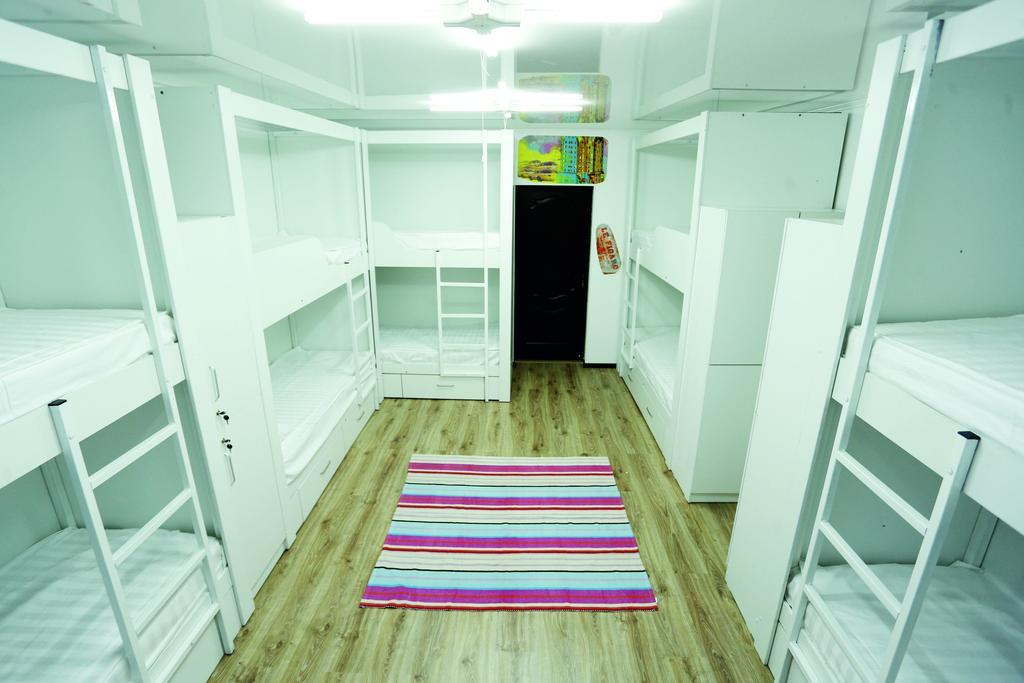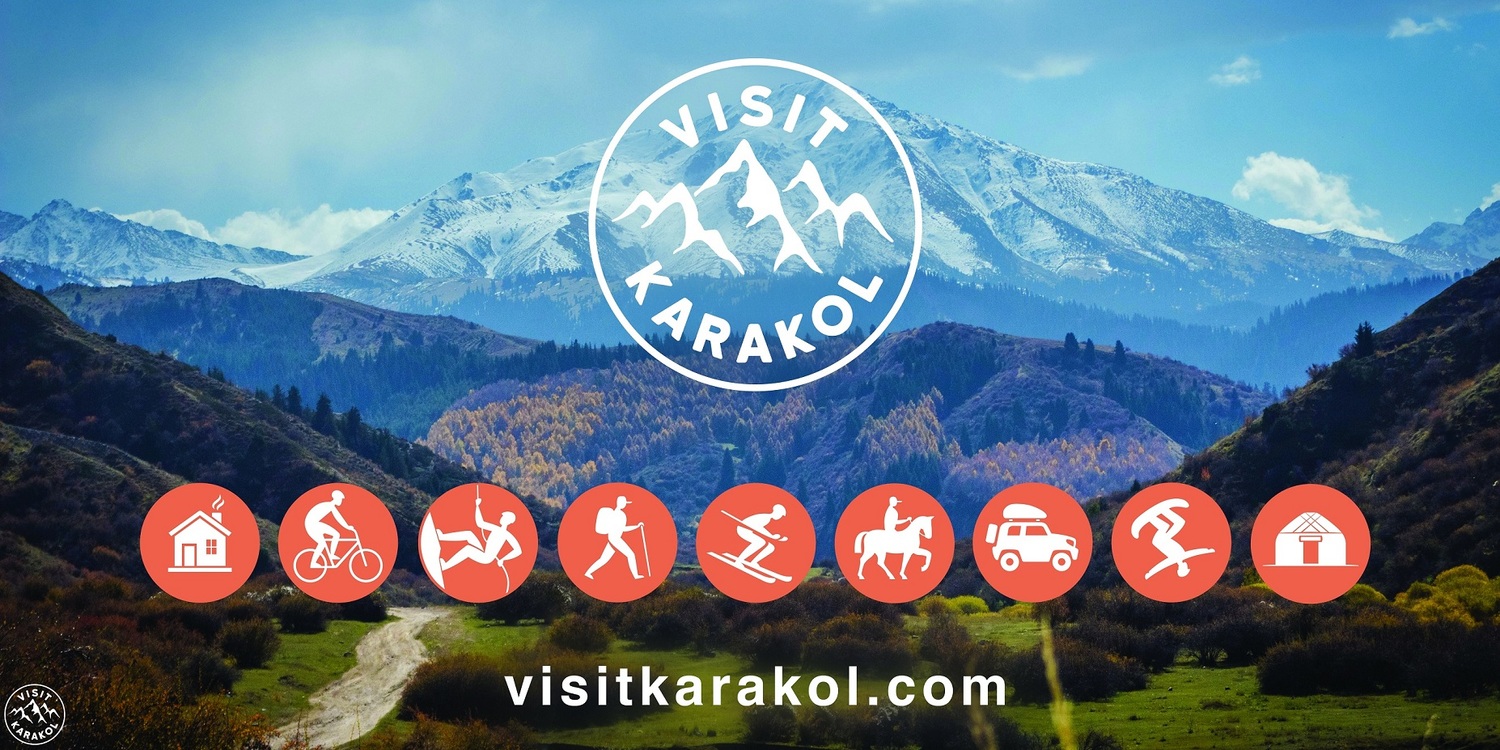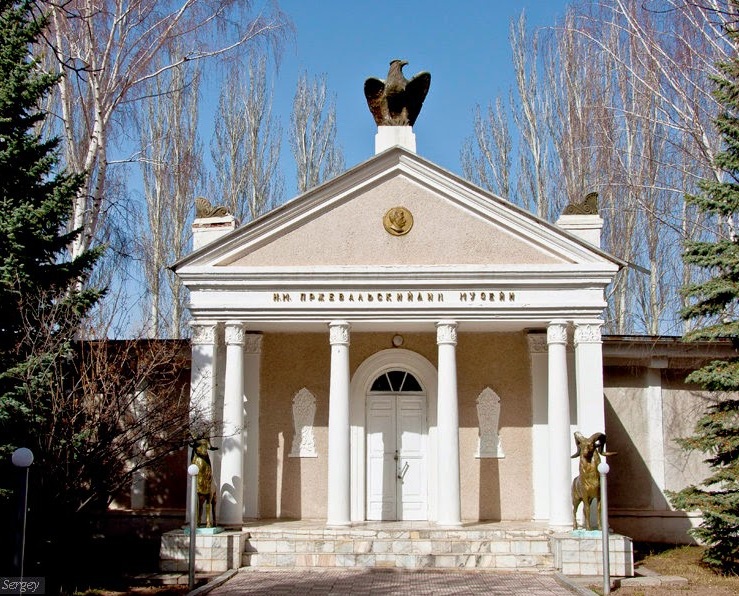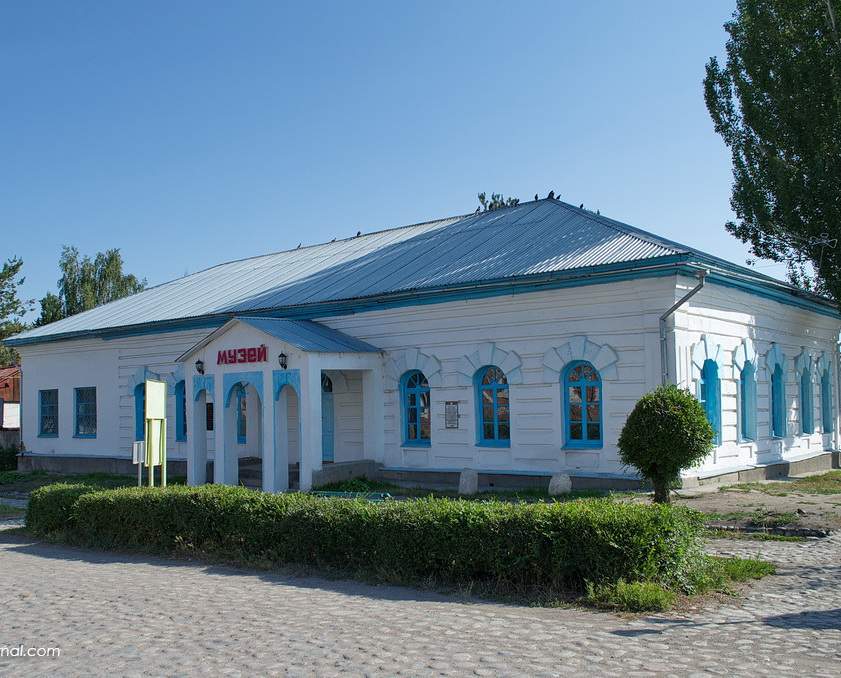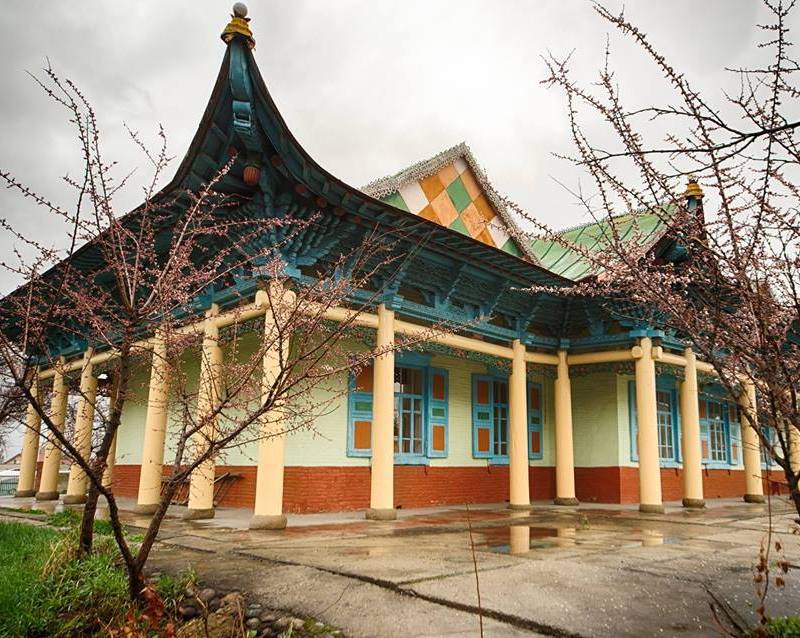- Visit Karakol, Kyrgyzstan, Karakol
- +996 551 451515
- info@visitkarakol.com
Holy Trinity Orthodox Church
One of the popular tourist attractions in Kyrgyzstan is the Orthodox Cathedral of the Holy Trinity in Karakol. This is one of something like forty orthodox churches in the country, and a fine example of architecture and its checkered history stands as a witness to the commitment and dedication of the community of the faithful. The story of the church goes back to July, 1869, when Karakol was basically a garrison town established as an outpost on the edges of the Tsarist Russian Empire. A chapel was established in the city centre to serve the Cossacks and other troops sent here, and a small brick building on stone foundations was erected.
It wasn’t the first church to be established in Kyrgyzstan, or even the Issyk Kul oblast. The first in Kyrgyzstan was a small wooden church in the village of Kyzyl Dyikan in the Chui oblast, and the first in Issyk Kul was the church in the village of Tyepliekluchenka, (warm spring), some kilometers to the East of Karakol, which was established in the Autumn of 1863 – also to serve a troop of Cossacks.
The Karakol church, however, was destroyed in an earthquake in 1889 which caused havoc in the town and took several lives. It was decided to build a replacement on the same spot, but this time in wood. It took six years to complete, and was finally consecrated in 1895. During the period of construction, a yurt served the congregation as a church. When completed, it was the tallest building in the city, with the tip of the cross standing some 26 meters above the ground. That is not hard to manage as it is still surrounded by “low rise” buildings, despite the fact that just down the road in the city’s main square there are newer, taller buildings including the oblast administration.
Karakol was an important and thriving city and the church benefitted from donations from the faithful. As a result, it quickly established itself as one of the most beautifully decorated churches, not just in Kyrgyzstan, but in the whole of the Turkestan see. Although originally established to serve those in the military garrison, the congregation included soldiers, (including three “full generals”), civil servants and citizens of the city and surrounding districts. Over the years, particularly following the Revolution in 1917, it has been used as an educational centre housing a school, ladies’ gymnasium and an institution of Higher Education; a Sports Hall; a Theater; a Dance Hall and even as a Coal Store. The serving priest was sent to a laager in Almaty when the building was confiscated by the state.
In a period of reconciliation between the Communist state and religion, in 1947, the building was returned to the faithful and by all accounts, members of the congregation were particularly active. Ten years later, in 1957, there were large crowds recorded at the Easter services.In 1961 it was once more returned to secular uses. During its many different incarnations, the fabric of the building suffered much damage. One account puts the level of damage at about 50%. In particular, the five “onion domes” which surmounted the roof were destroyed. In 1986, however, in recognition if the historic nature of the building, the local authority began restorations and a small museum was established.
Then, in 1991, following the collapse of the Soviet Union and the Independence of Kyrgyzstan, the local authority once again gave the building back to the church, with the proviso that all further restorations were their responsibility. This was confirmed in 1995 by the President, Askar Akaev. Since then the church has undergone further restoration work and continues to thrive as a centre for the faithful, and support for several needy charities in the local community.Amongst the decorations inside the church, there are a number of icons, including some that were saved from the monastery at Svetly Myz, (where the evangelist St. Matthew is thought to be buried), such as a version of the Theotokos of Tikhvin, (an icon which was thought to have been the work of another evangelist, St.Luke, although Art historians suggest it was painted by a Russian artist sometime around 1300), and a copy of an icon of Saint Troitzy by Andrei Rublev, (who lived in the 13th Century).July 9th, (although the church – which still uses the Julian calendar – still refers to it as June 26th), was a special day in Karakol, because it was the Day of Commemoration, or Memorial Day, for the Tikhvin icon. There was a special service and even a bus from Bishkek brought worshippers who wanted to attend the celebrations.
Pictures
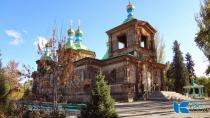
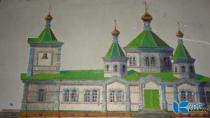
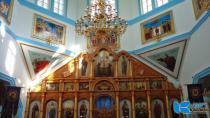
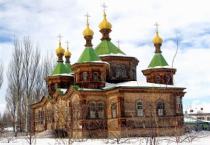
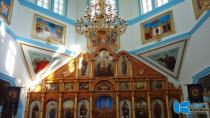
Каракольская церковь
Обработка видео...
How to get there?
From Karakol city
You can walk till this place.

